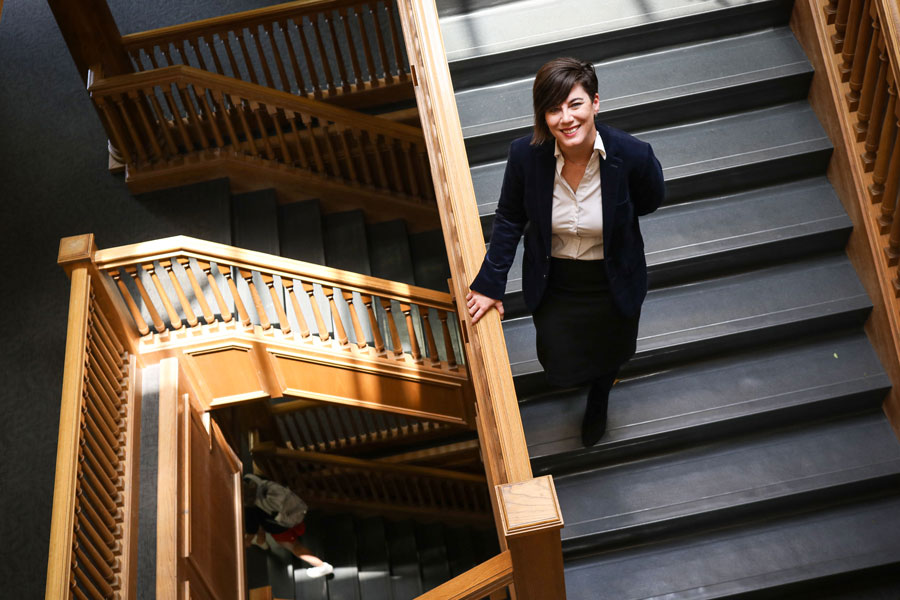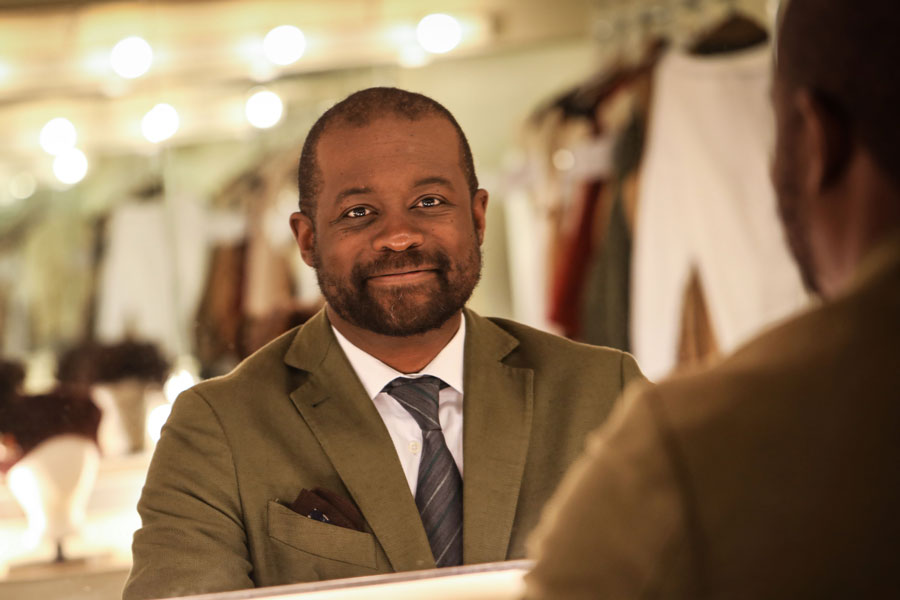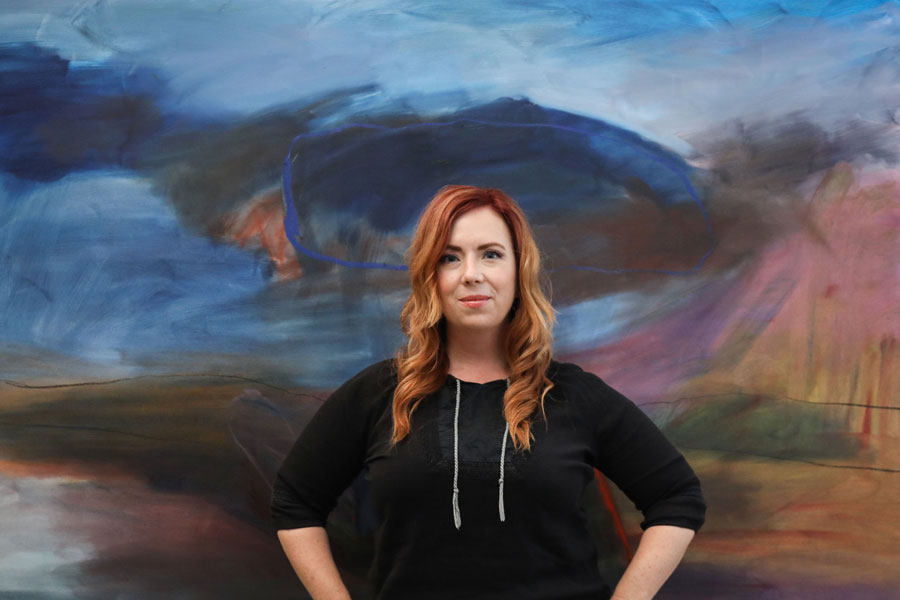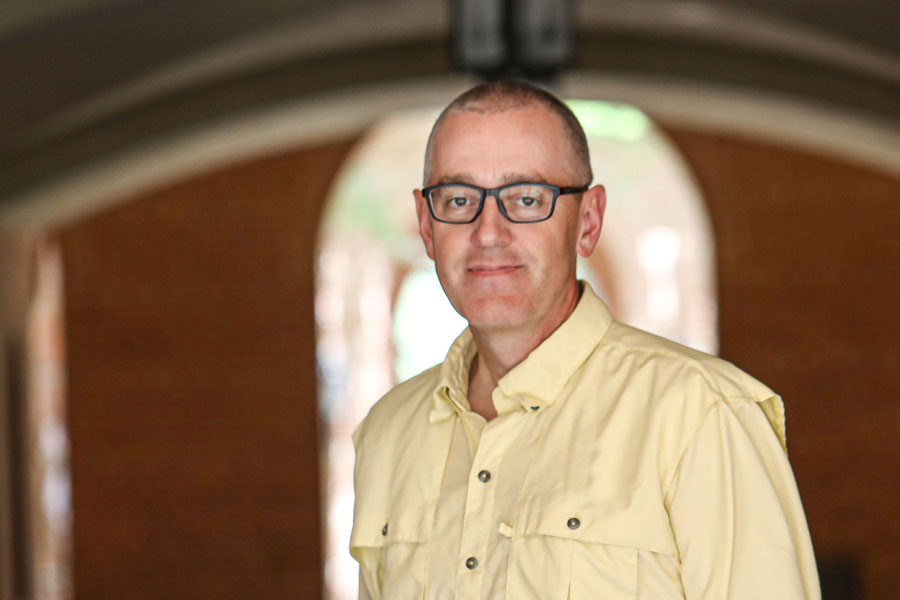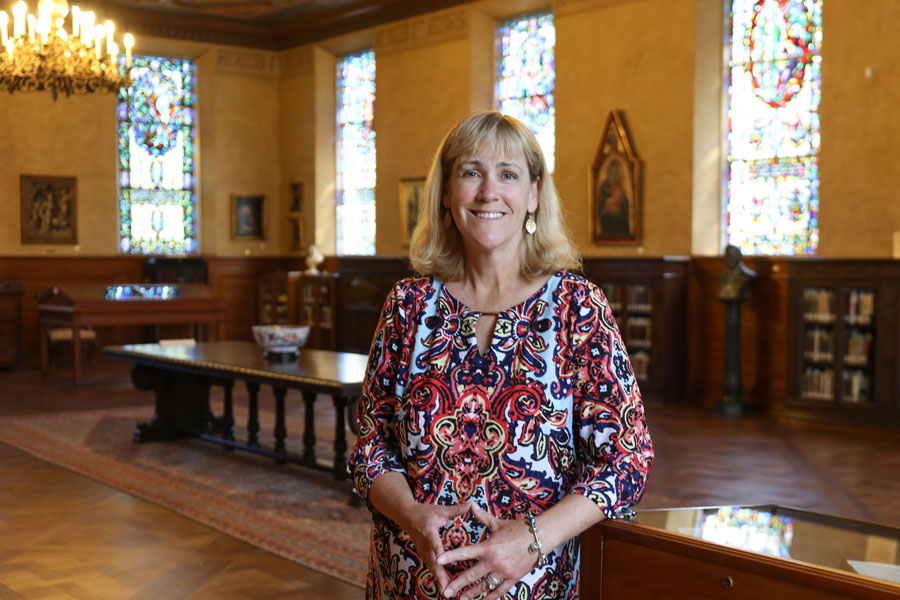Picture of Success
Understanding how the humanities scholarship contributes to Baylor's research achievements
Baylor’s achievement of Research 1 or “R1” status — the highest designation awarded by the Carnegie Classification of Institutions of Higher Education — was met with fanfare and celebration across campus when announced in December 2021. President Linda A. Livingstone, Ph.D., called for a campus-wide effort in her 2017 inaugural address, and the University attained the long sought-after recognition earlier than expected thanks to the hard work of faculty, students and staff.
High-level research activity and increasing grant dollars may initially evoke images of STEM (science, technology, engineering and mathematics) laboratories, microscopes and white coats. However, a few of the many irreplaceable pieces of the puzzle that led to Baylor’s R1 achievement were the University’s humanities and social sciences programs that include English; Classics; history; modern languages and cultures; philosophy; religion; sociology; communications; political science; journalism, public relations and new media; and fine arts such as art, theatre, and film and digital media.
“Because so many of today’s challenges require interdisciplinary research, all departments have been and will continue to be important to our research enterprise.”Lee Nordt, Ph.D. // Dean of the College of Arts and Sciences
“Because so many of today’s challenges require interdisciplinary research, all departments have been and will continue to be important to our research enterprise,” Lee Nordt, Ph.D., dean of Baylor’s College of Arts and Sciences said. “For example, you can’t resolve an environmental health problem, especially in a developing country, without an understanding of language and culture, political landscape, the social determinants of health or the faith dimension and communication network of the people.”
When institutions are evaluated for R1 inclusion, some key benchmarks include the number of doctoral recipients and external research funding. Humanities and social sciences doctoral counts placed Baylor near or ahead of many peer institutions. Baylor outranked programs including Tulane University, Boston College, Syracuse University and Clemson University in the humanities and Dartmouth College, Tufts University in Massachusetts and the University of California, Santa Cruz in social sciences. Baylor out-earned schools including Drexel University in Philadelphia and the University of California, San Diego for non-STEM external funding dollars and nearly matched the funding earned at programs like Brown University, the University of Maine and Louisiana State University (LSU).
College of Arts and Sciences Associate Dean Kimberly R. Kellison, Ph.D., an associate professor of history, says there is tremendous momentum for Baylor’s humanities programs, many of which have strong doctoral programs.
“Those programs and the granting potential associated with them are major contributors to earning and maintaining R1 status,” Kellison said. “The research momentum was there before we reached R1, and we have seen steady growth over a long period of time.”
Working Alongside Students
Providing a transformational education that particularly focuses on undergraduate students often means being intentional about including undergraduates in ongoing research and publication efforts.
“I try to have my research inflect all of my teaching to some degree, often through literary analysis and sharing with the students some of my own research on the topic.”Nicole Kenley, Ph.D. // English
Nicole Kenley, Ph.D., is a lecturer in Baylor’s English department, director of first-year writing and an expert in detective and contemporary American fiction and globalization in literature. Her students often latch onto the genre of inquiry within detective fiction, and she can make space for deeper discussion about her own academic pursuits.
“It’s very exciting to have my research influence my teaching and vice versa,” Kenley says. “I try to have my research inflect all of my teaching to some degree, often through literary analysis and sharing with the students some of my own research on the topic. If we are reading a text that I’ve written on or published on, I will let students know. I get to encourage students to pursue either that kind of critical study through graduate or doctoral programs, or to encourage them as creative writers. A lot of them get really excited about detective fiction and say, ‘Oh, I want to write that. That’s cool. How do I do that?’”
Across higher education, the humanities have often been scaled back or cut all together as other institutions choose to pursue corporate investments and funding that have more of a perceived immediate payoff. Baylor’s steadfast commitment to growing and evolving its humanities programs places the University in a powerful position as a Christian institution to support researchers who answer some of the biggest questions facing society and to lead among peer institutions across higher education.
Jonathan Tran, Ph.D., is the George W. Baines Chair of Religion and an associate professor of philosophical theology. After authoring Asian Americans and the Spirit of Racial Capitalism, his latest book, Tran embarked on a book tour that took him to places like Princeton University, Yale University and the University of California, Berkeley. At each university, conversations were ongoing about the role and place for humanities in the current and future endeavors of contemporary R1 institutions with long histories of top-tier research.
“There is a real appreciation for Baylor, the moment we’re in and the opportunity it represents,” Tran says, citing a number of six- and seven-figure research grants with which he is currently working. “In each case, I found Baylor to be in a better position to support the research than most of my peers at other institutions. And that’s the benefit of the strong press toward R1.”
While R1 status marks achievement in research across the University, Baylor’s opportunity to lead within the top-tier research conversations is exceptional and sets Baylor researchers apart from their peers.
“The substance of what we’re doing here is toward the Christian identity and purpose,” Tran says. “Our R1 (status) can be an empty signifier. It could just represent a series of numbers that you either satisfy or you don’t, but I take it that the substance of our research is about the role of Christianity in the world — namely to benefit neighbors. The research is always tied in these ways so that you have the formal supports, but also you have this substantive forward-looking vision of the Christian university. That’s what holds it all together.”
Aspirational Practitioners
The importance of integrating students into research and scholarly pursuits is as critical in the humanities as it is in other academic units across campus. “Giving students opportunities to engage inside and outside the classroom with faculty gives them experiences and broader understanding that helps them transition to graduate school or the workforce,” Nordt said.
The professional pursuits of faculty and the successes and failures they encounter cross over and intertwine with their roles as teachers. Students see the professional work that their professors are pursuing in and outside of their role as faculty and aspire to a similar path in their own careers. In the midst of that cycle comes opportunities to share the joy of getting an article published or an artistic work recognized and the sting of rejection. It is an opportunity to share the full range of human emotion.
“I share that with students,” Kenley says. “When I get articles back from peer reviewers, something I’ll do is show the students, ‘Look, I just sent this out for peer review. This is what peer review means: You send it out to experts in the field, and you get this feedback. Look at these comments that they’ve given me. I’m a professional, I’ve been doing this for 15 years, and I still get this kind of feedback from peer reviewers.
“How do you take feedback? How do you incorporate feedback into your own work? I want to show them that we are all on this journey of learning to write and learning to improve together. It’s not like I’m some expert from on high who knows everything. I get a lot of feedback and critique. They appreciate knowing that we’re all growing and changing as writers together.”
For the deep roster of performers and artists that constitute Baylor’s art, film and digital media, and theatre faculty, professional pursuits can include auditioning for major touring theatre productions or submitting paintings for studio shows.
Sam Henderson, B.F.A. ’05, M.F.A., lecturer in theatre and film, enjoyed an acting career in New York City before moving to Waco and accepting a faculty position at Baylor.
While teaching classes like Acting for the Camera, Acting for Directors and Short Film Production each semester, Henderson, who is a member of Actors’ Equity Association and eligible for membership with the Screen Actors Guild (SAG), also has performed in Equity theaters across the state of Texas including several productions at the Tony-Award winning Dallas Theater Center. He has also written, directed and acted in films that have performed well on the festival circuit.Con Alma, a short film written and directed by Henderson, premiered at the Oscar-qualifying, RSF Martha’s Vineyard African American Film Festival and went on to become an official selection at the Oscar-qualifying St. Louis International Film Festival.
“Perhaps the most meaningful part of my career has been students coming to me and saying, 'I want to be like you.'”Sam Henderson, B.F.A. ’05, M.F.A. // Theatre and Film
“Each time I’m cast in a play or film or something I’ve written and directed is accepted into a national or international festival, it’s tantamount to a biology colleague submitting a research article to a top journal in their field,” Henderson says. “These experiences not only sharpen my craft as an artist and advance the discipline, but they also deepen my insights into the fields of theater and film and, ultimately, make me a better teacher.”
Sharing his experiences as a Black performer gives Henderson a particularly powerful opportunity to mentor and prepare underrepresented students — people of color and women alike — on what to expect if they choose to pursue a career in the entertainment arts.
“What’s been especially helpful over the years is being able to speak to minority students about the acting profession,” Henderson says. “The game is not the same. The playing field is not level for minorities and women in the industry, though I think it’s getting a lot better.”
Henderson often shares his audition experiences with his students — good and bad. The opportunities he has been given have often offered more hope to those students who see the joy of performing surpass the weight of the seemingly impenetrable access to the industry.
“Unlike some other professions, there’s not any one direct path to success in the entertainment industry, so there’s value for my students when I’m able to guide them with information from a variety of first-hand experiences rather than a theoretical or even hypothetical approach.”
“I talk with students about the importance of being an artist and that it is research, too.”Winter Rusiloski, M.F.A. // Art
Baylor painting professor Winter Rusiloski, M.F.A., is a painter whose work has been featured in exhibitions worldwide. She works primarily with abstract landscapes, and her paintings often focus on the sensitivity to movement and space, showing contrasts of spaces in nature, like the desolate Big Bend landscape and the green spaces in Glacier National Park. Welcoming students into her studio offers opportunities to include them in the cyclical process of submitting paintings for gallery consideration.
“I can show them what I’m making and talk to them about what I’m working on. We look at art history and contemporary art,” Rusiloski says. “I share with them when I get into shows and when I don’t. I encourage them to be entering juried shows — peer-reviewed shows.”
Rusiloski shows students that she is working like them, that she is entering pieces, sometimes getting accepted and sometimes getting rejected.
“I talk with them about the importance of being an artist and that it is research, too” she says. “Many people that aren’t familiar with the arts don’t know that. We’re looking for the most relevant, helpful progress we can make.”
A natural progression of professors bringing students alongside their work is getting to see a number of those students aspire to follow in their footsteps. That may be writing the next presidential biography, performing on stage or any of the many number of professions represented by faculty within the humanities.
“Perhaps the most meaningful part of my career has been students coming to me and saying, ‘I want to be like you,’” Henderson says. “It’s the greatest motivator, encourager and inspiration in my professional career — to have students look up to me, to view me as someone who is successful and as someone they both aspire to be or believe that they could possibly do the same thing I do and to view that as a success.”
What’s Next
An elite opportunity for undergraduates, called the Humanities Research Fellows program, allows high-ability students to focus on crafting an interdisciplinary curriculum that engages many of the big questions of human existence.
“My hope and expectation is that Baylor will have a truly global campus in terms of faculty representation, student participation and student learning opportunities.”Paul Martens, Ph.D., Ethics
Paul Martens, Ph.D., associate professor of ethics in Baylor’s religion department and director of interdisciplinary studies, leads this new major, helping bridge the gap between the various disciplines across research areas and academic specialties.
“It’s a new program designed toward really attending to the constructive and positive role humanities could play in the world today,” Martens says. “It’s designed to engage the contemporary world in a rich and thick way. The Humanities Research Fellows program is a way for undergraduates to do research in interdisciplinary humanities in ways that illuminate the complexities of the challenges that we face today and to help them navigate those better. In our simplified culture, which is driven ultimately by political or economic gains, this is a way to step back and engage those things in a complex way.”
Additional innovations coming to the humanities offerings will include expanding and reinvigorating ethnic and global area studies such as Latin American studies, Asian studies, Eastern European studies and more.
“They help our students to make sense of the world in which they find themselves,” Martens says. “We’ve tended to think about our global relations as only missions-oriented, which is great, but we’re now able to increasingly engage these critically and productively in other ways, as well.”
Another area of recent growth within the humanities at Baylor is an effort to expand the digital humanities initiative within University Libraries. A growing number of academic and historic writings and works are being digitized, creating tremendous opportunities for mining that data and harnessing it for research.
“When you’re studying detective fiction, there are thousands and thousands of novels to study. It can be challenging to read all of them at once,” Kenley says. “In digital humanities, one thing you can do is text data mining. I can create a corpus of 50 forensic detective novels and analyze them for keywords to see how globalization is changing the face of detective fiction in more of an aggregate sense.”
Incorporating this technology in the classroom allows students to do smaller-scale digital humanities projects. It also gives faculty opportunities to encourage growth and interest that could turn into thesis projects and graduate school research pursuits.
The growth of interdisciplinary studies, global area and ethnic studies, and digital humanities opens the doors for dynamic, big-picture initiatives within the humanities at Baylor.
“My hope and expectation is that Baylor will have a truly global campus in terms of faculty representation, student participation and student learning opportunities,” Martens says. “By participation, I mean both our faculty and students traveling globally, but also the University being home to global scholars and global students. This is a transition for Baylor.”
Commitment to Humanities
Commitment to scholarship and excellence in the humanities is more than a passing endeavor. Baylor’s humanities programs strive to embody the core of each of the four pillars outlined in Illuminate, the University’s strategic plan. Transformational education, groundbreaking research and nationally recognized programs in human performance — all cultivated within a caring, Christian community — continue to serve as the guiding principles for Baylor’s humanities programs.
“One of the key things the humanities do is teach us to be better humans,” Kellison says. “They teach us to learn more about being human, about the human condition, the human story. They teach us to be critical thinkers, to be creative, to be innovative, to ask these questions and to get outside of our comfort zone.”
“One of the key things the humanities do is teach us to be better humans.”Kimberly R. Kellison, Ph.D. // Associate Dean of the College of Arts and Sciences
The scope of the humanities is great in content and depth, but the opportunity it affords faculty towards forming and guiding students can be life-changing.
“The humanities are about being human,” Martens says. “Faculty in one sense are mentors and educators; but, in another sense, they exhibit and model what it means to be human. Particularly in the humanities, faculty ought to embody in their research, in their classroom and in their everyday lives what it means to be truly human. In that sense, they have a huge responsibility and a huge gift that extends well beyond the course content.”
